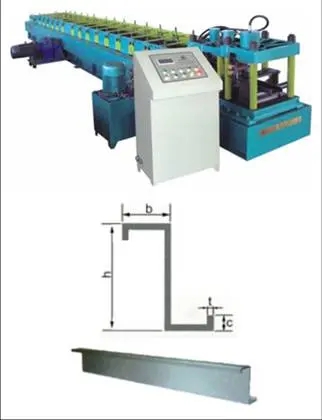
The Evolution of Stud and Track Making Machines
In the world of manufacturing, precision and efficiency are paramount. One area where these qualities are particularly crucial is in the production of stud and track systems, widely used in construction and manufacturing industries. The advancement of stud and track making machines has revolutionized the way these components are produced, providing faster, more reliable, and cost-effective solutions.
Traditionally, the production of studs and tracks was a labor-intensive process. Workers would manually cut, shape, and assemble metal components, which not only consumed a significant amount of time but also introduced a higher margin for error. As demand for these essential building components grew, it became clear that automation was needed to enhance productivity and maintain quality. This is where stud and track making machines come into play.
These machines are specifically designed to transform raw materials, usually steel or aluminum, into precisely dimensioned studs and tracks. The modern stud and track making machine employs a series of automated processes including cutting, bending, punching, and forming, all of which significantly reduce manual labor. With the use of advanced technology such as Computer Numerical Control (CNC), these machines can produce components with incredible accuracy, ensuring that each part meets exact specifications.
One of the primary advantages of these machines is their capacity for high-volume production. With the ability to operate continuously, they can meet the demands of large construction projects which require thousands of studs and tracks. This increases efficiency, allowing manufacturers to fulfill orders faster and avoid delays. Moreover, by minimizing manual handling, the risk of workplace injuries is also reduced, creating a safer working environment.

Another key benefit of stud and track making machines is their flexibility. Modern machines are often equipped with software that allows for easy adjustments to the production line. This means that manufacturers can quickly switch between different designs and sizes of studs and tracks without significant downtime. This adaptability is particularly valuable in an industry where customization is frequently required.
Furthermore, the integration of robotics and smart technology into these machines has paved the way for enhanced quality control. Sensors and cameras can monitor the production process in real-time, detecting any anomalies or defects instantly. This level of oversight ensures that only products that meet strict quality standards leave the factory, thereby reducing waste and improving customer satisfaction.
In recent years, sustainability has also become a focal point in manufacturing processes. Many stud and track making machines are now designed with energy efficiency in mind, reducing the carbon footprint associated with production. Additionally, these machines are often capable of reusing scrap metal, further minimizing waste and promoting a circular economy.
The future of stud and track making machines looks promising, with continual advancements in technology driving further improvements. Innovations such as artificial intelligence and machine learning are being explored to optimize production processes further, predict maintenance needs, and enhance overall efficiency.
In conclusion, stud and track making machines have transformed the manufacturing landscape for essential building components. By automating production, enhancing accuracy, and promoting sustainability, these machines not only meet the demands of a growing industry but also set the stage for future advancements. As technology continues to evolve, the potential for these machines to contribute positively to manufacturing practices remains vast, paving the way for safer, more efficient, and environmentally-friendly construction solutions.